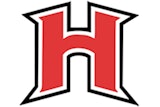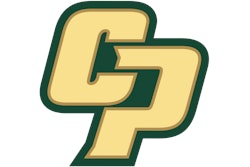Trademark law is clear on the protection granted to a university's name, nickname and logo. Its color scheme, however, is (as it were) a gray area. The decision in a recent case, Louisiana State University v. Smack Apparel Co. [2008 U.S. App. LEXIS 24983], promises to change all that. At issue were T-shirts sold to fans over the Internet or to retailers by the Tampa, Fla.-based company that bear what Smack calls "a twisted take" on sporting events and rivalries. The shirts' messages (to give one example, fans of LSU can buy shirts reading "Bama Bleauxs!") depart from the standard offerings of other vendors, but the shirts utilize schools' color schemes and frequently appear alongside apparel that has been officially licensed by the universities.
In 2005, stung by six of Smack's T-shirt designs concerning the appearance of the LSU and University of Oklahoma football teams in the 2004 Sugar Bowl, as well as the number of national championships previously won by Ohio State University and the University of Southern California, those four institutions together sued Smack, alleging that the shirts, by using the schools' colors, infringed their trademark rights. They did so even though, unlike their respective names and commonly used initials, their color schemes are not registered trademarks.
The universities alleged that Smack's shirts infringed their trademarks by combining the universities' colors with references to well-known and highly publicized athletic events in which the universities participated; titles and honors bestowed as a result of the referenced athletic event; and the geographic area in which the university is located or associated. In granting summary judgment for the universities - preventing Smack from manufacturing, distributing or offering for sale any of the six designs - the district court held that Smack's use of the color schemes and similar logos violated the universities' trademarks.
Smack appealed to the United States Court of Appeals for the Fifth Circuit, which ruled that to prevail on their trademark infringement claim, the universities would have to establish ownership of a legally protectable mark and demonstrate a likelihood of confusion in the marketplace. In examining the first issue, the court noted that, as codified in the Lanham Act, federal trademark law protects "any word, name, symbol, or device, or any combination thereof" that is used or intended to be used "to identify and distinguish" a person's goods "from those manufactured or sold by others and to indicate the source of the goods, even if that source is unknown."
In addition, the court stated, a trademark does not have to be registered in order to obtain protection. Ownership of trademarks, the court held, is established by use, not by registration. The four universities that filed suit have, in fact, used their respective color combinations for more than 100 years, and the color schemes can be found in many areas associated with university life, including on campus signs and buildings; on printed brochures, journals and magazines; and in connection with their athletic programs. The result is widespread recognition of the colors among fans of college sports in general and fans of those schools in particular. Smack argued that the color schemes, even when used in connection with text that made reference to the universities or their accomplishments, were too broad to encompass a trademark because the concept of color is not distinctive.
The court rejected Smack's claim, holding that the Lanham Act describes the universe of permissible marks in the broadest of terms. The court, however, did rule that before a color scheme could gain trademark protection, it would have to have acquired secondary meaning and be nonfunctional. To determine whether a color scheme has acquired secondary meaning, courts look at various factors such as the length and manner of use of the mark, volume of sales, amount and manner of advertising, nature of use of the mark or trade dress (the distinctive packaging or design of a product that promotes the product and distinguishes it from other products in the marketplace) in newspapers and magazines, and the defendant's intent in copying it.
In this case, given the longstanding use of the color schemes and their prominent display on merchandise, annual sales of the plaintiffs' licensed products exceeding $93 million collectively, the well-known nature of the colors as shorthand for the schools themselves and Smack's intentional use of the colors and other references, the Fifth Circuit held that when viewed in the context of apparel, the marks had acquired the secondary meaning of identifying the universities in the minds of consumers as the source or sponsor of the products rather than identifying the products themselves.
As for the issue of functionality (a product feature that is functional does not qualify for protection under the Lanham Act), the court found that the universities' color schemes, logos and designs have no significance other than identification with the universities. Smack's contention that it would be placed at a significant disadvantage if it were unable to satisfy consumer demand for game-day clothing that allows fans to conform to the crowd was similarly smacked down.
Smack's alleged competitive disadvantage, the court ruled, relates solely to an inability to take advantage of the universities' reputations and the public's desired association with the universities that its shirts create - not an advantage to which it is entitled under the rubric of legitimate competition. Therefore, the court concluded that the marks are nonfunctional. Having met the first part of the test, ownership in a protected trademark, the court next examined whether Smack's use of the colors created a likelihood of confusion in the minds of potential customers as to the source, affiliation or sponsorship of the product at issue.
Smack argued that its T-shirt designs were not identical to any of the T-shirts licensed by the universities and therefore were not likely to cause confusion among consumers. The court, however, disagreed and held that the overwhelming similarity of the marks and Smack's admitted intent to profit from the universities' reputations compelled such a conclusion. Smack's use of the universities' colors and marks was designed to create the illusion of affiliation with the universities, the court said, and essentially obtain a free ride by profiting from confusion among fans of the universities' football teams.
Finally, Smack argued that since LSU knew of and never objected to the shirt designs, the doctrine of "laches" applied. Similar to "statute of limitations," except based on equity rather than on law, the doctrine holds that neglecting to assert a right, together with a lapse of time and other circumstances, prejudices an adverse party. Laches is comprised of three elements: delay in asserting one's trademark rights, lack of excuse for the delay, and undue prejudice to the alleged infringer caused by the delay.
In rejecting this defense, the Fifth Circuit held that because Smack admitted it intentionally copied the universities' color schemes, with the bad-faith intent to capitalize on the universities' goodwill, it lacked the clean hands necessary to assert the defense. As the popularity of college athletics has grown, so too has demand for university memorabilia, making it essential that institutions actively protect any trademarks associated with their university or athletics program.
The Fifth Circuit's decision aids universities in two ways. First, it should help them maintain control of their image, by preventing guerilla companies from selling products alongside officially licensed merchandise. If Smack or other apparel manufacturers printed negative messages on their shirts and fans perceived a particular university as their source or sponsor, the university's image and goodwill could be damaged in the minds of consumers. Second, the decision should protect the value of universities' licensing programs. Any decision allowing Smack or other manufacturers to sell similar products directly alongside university-licensed merchandise would not only have damaged the value of their athletic licensing program, but could have had a negative impact on the budgets of the schools and athletic teams.




































